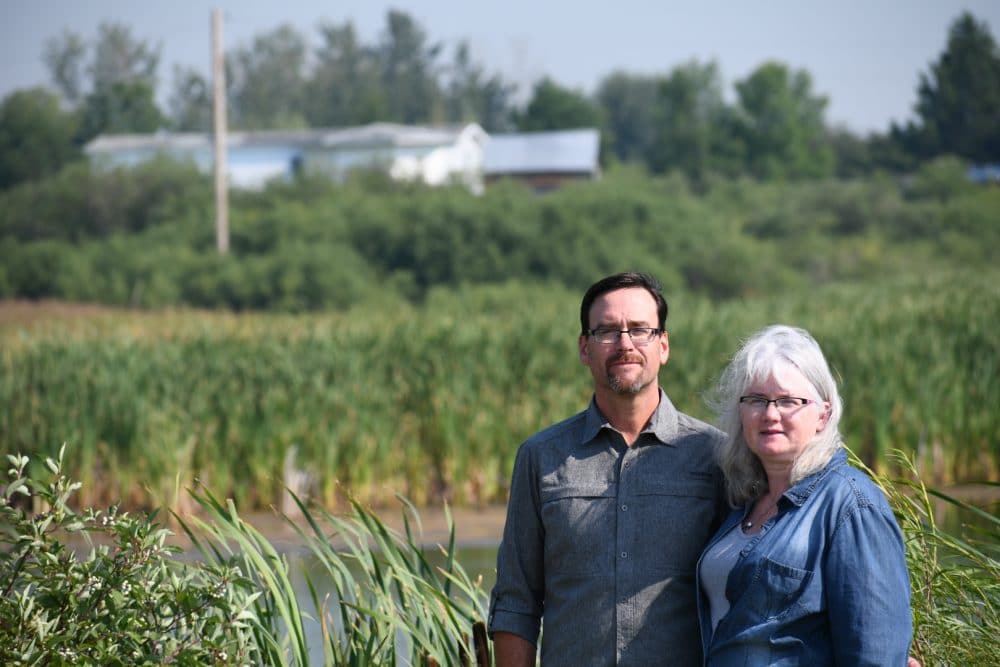Story
October 17, 2018
Rapid City family makes wetlands part of their farming future
Tom and Valerie Northam accessed DUC's landowner programs to restore and protect 29 wetlands on their Rapid City area property.

To say their land is important to Tom and Valerie Northam would be an understatement. To them, they and their land are one.
The Rapid City area couple’s home stands on land that has been farmed by Tom’s family for 80 to 90 years.
“Some day, who knows, maybe our guys will have it, right?” Valerie says, referring to the couple’s four sons. “But the thing is, we want to protect it no matter what.”
DUC programs for Manitoba landowners
The Northams are among the latest Manitoba landowners to access DUC programs that help them restore and preserve natural areas on their property while earning extra money. The couple is working with DUC to return parts of their property to their natural state by restoring drained wetlands, in their case as part of a DUC conservation agreement.
Under DUC’s Conservation Agreement program, landowners receive a one-time lump sum payment if they agree not to break or drain wetlands or surrounding habitat. The agreement is permanent, remaining even if the land is sold, but there’s flexibility to allow for haying, grazing, and cultivation of certain wetlands during dry periods.
A growing number of landowners are signing conservation agreements with DUC. Last year alone, more than 30 signed up and protected about 7,000 acres of habitat. While payments vary, last year the average landowner payment for a conservation agreement was $92,000.
Now, more landowners will get the same chance to restore nature as DUC has recently received funding for wetland restoration through the Lake Winnipeg Basin Program. DUC currently pays landowners $1,500 per acre when they sign a 10-year wetland restoration agreement. Ponds and marshes are restored by plugging drainage ditches with small, natural-looking earthen dams.
Incentives are greater for landowners if restoration is done with a conservation agreement.
Together, we can all make a difference. I know that may sound like a speech, but it’s true.
Restoring and protecting habitat near Rapid City
As part of their agreement, the Northams are restoring eight wetlands covering more than nine acres. They’ll permanently protect another 20 basins, and preserve some grassland where their livestock graze.
For them, though, this isn’t about the money. Tom says their conservation agreement strikes the right balance between nature and agriculture.
“You’re protecting the wetlands for the future, and it provides income,” he says.
The marshes on the family’s property have provided fond memories and enriched their lives.
As a boy, Tom enjoyed trips to the local swimming hole, and biked to local marshes to watch songbirds in the reeds. Valerie home schooled three of her boys, and their property was their outdoor classroom. The eldest son now studies biology and chemistry at university.
Stewardship of natural habitat for wildlife and livestock
The marshes and their habitat also bring wildlife that delight the family—ducks, geese, eagles, cranes, pelicans, owls, moose, deer, and even bears.
Plus, the shallow basins provide livestock at their hobby farm with water during drought, and prevents flooding of neighbours by slowing runoff.
The Northams’ conservation work with DUC will directly benefit their farm too, as they intend to buy a tractor with the incentive payments they receive.
But it’s stewardship really motivates the couple. As landowners, they believe they’re responsible for preserving nature and encourage others to do the same.
“Together, we can all make a difference. I know that may sound like a speech, but it’s true,” Valerie says.
